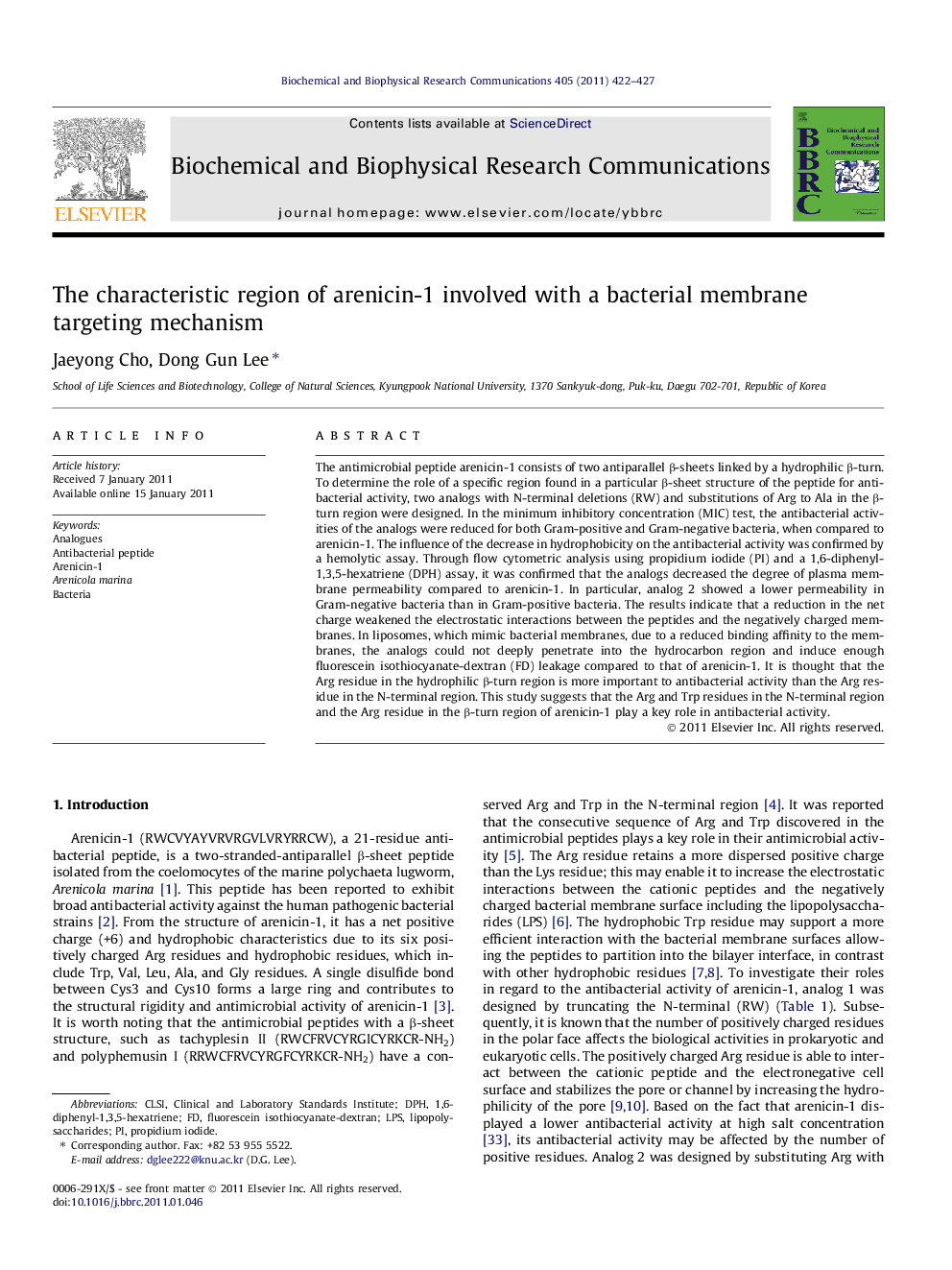| کد مقاله | کد نشریه | سال انتشار | مقاله انگلیسی | نسخه تمام متن |
|---|---|---|---|---|
| 1930680 | 1050523 | 2011 | 6 صفحه PDF | دانلود رایگان |

The antimicrobial peptide arenicin-1 consists of two antiparallel β-sheets linked by a hydrophilic β-turn. To determine the role of a specific region found in a particular β-sheet structure of the peptide for antibacterial activity, two analogs with N-terminal deletions (RW) and substitutions of Arg to Ala in the β-turn region were designed. In the minimum inhibitory concentration (MIC) test, the antibacterial activities of the analogs were reduced for both Gram-positive and Gram-negative bacteria, when compared to arenicin-1. The influence of the decrease in hydrophobicity on the antibacterial activity was confirmed by a hemolytic assay. Through flow cytometric analysis using propidium iodide (PI) and a 1,6-diphenyl-1,3,5-hexatriene (DPH) assay, it was confirmed that the analogs decreased the degree of plasma membrane permeability compared to arenicin-1. In particular, analog 2 showed a lower permeability in Gram-negative bacteria than in Gram-positive bacteria. The results indicate that a reduction in the net charge weakened the electrostatic interactions between the peptides and the negatively charged membranes. In liposomes, which mimic bacterial membranes, due to a reduced binding affinity to the membranes, the analogs could not deeply penetrate into the hydrocarbon region and induce enough fluorescein isothiocyanate-dextran (FD) leakage compared to that of arenicin-1. It is thought that the Arg residue in the hydrophilic β-turn region is more important to antibacterial activity than the Arg residue in the N-terminal region. This study suggests that the Arg and Trp residues in the N-terminal region and the Arg residue in the β-turn region of arenicin-1 play a key role in antibacterial activity.
Research highlights
► The antibacterial activity of the analogs was less potent than that of arenicin-1.
► The hydrophobicity of the analogs was reduced.
► Analog 2 had little effect on Gram-negative bacteria.
► Analogs have less binding affinity to the bacterial membrane.
► A reduction in the net charge weakened the electrostatic interactions.
Journal: Biochemical and Biophysical Research Communications - Volume 405, Issue 3, 18 February 2011, Pages 422–427